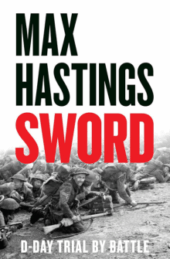Many history books can be somewhat daunting to take on. Too many players, too broad a scope, too many maps or diagrams; these can all add to the reader losing focus, having to constantly flick back and forth between pages to get a full grasp of what the author is trying to describe. Instead of being books to enjoy and be entertained by, they can sometimes instead become reference books.
Not so with Angus Konstam’s The Convoy . By focusing on one convoy in isolation, Konstam has produced a book that can be enjoyed by both historians and laymen alike. The level of detail he uses is breath-taking; the research that has gone into this book second to none. Utilising eye-witness testimony, along with ship’s logs and other contemporaneous documents, he has put together a comprehensive account of probably the most significant convoy of the whole Battle of the Atlantic theatre.
The convoy in question, codenamed HG-76 is to become a turning point. It sails from Gibraltar to Liverpool in December of 1941, just as the Battle of the Atlantic is in full flow – and not going in favour of the Allies. U-boats are causing untold shipping losses, both merchant and military.
Thirty-two merchant ships, either carrying raw materials, or returning from operations in the Mediterranean, are escorted by a number of Royal Navy warships, including the aircraft carrier HMS Audacity. Off the coast of Spain, a wolf-pack is lurking, ready to pounce. Overhead, German reconnaissance planes are following the convoy’s every move.
Admiral Dönitz – the head of the U-boat arm of the German Navy (or Kriegsmarine) – under orders from Hitler to “sever the sea route between Britain and Gibraltar”, has given HG-76 his full attention. He wants the convoy destroyed; as many ships to be sunk as possible. But there is one factor he hasn’t reckoned on.
In charge of the Royal Navy escort, aboard the sloop HMS Stork, is one of the standout British sailors of World War Two: Commander Frederic John “Johnny” Walker. Taking the fight to the Germans, Walker puts his unique ideas and U-boat hunting tactics into practice – and to devastating effect. The hunters (the U-boats) are quickly turned into the hunted as Walker shows his mettle, fighting hard to get as many ships safely into port as he possibly can, whilst at the same time, showing the Germans that they can’t have it all their own way.
The book grabs the reader’s attention from the get-go. The opening scene places the reader in the thick of the action as the aircraft carrier, HMS Audacity comes under attack. The battle scenes throughout are described in vivid detail, and in an easy to follow way. The narrative flows, keeping the reader fully engaged and rooting for Walker and his men to come good.
The Convoy is no reference book, and Konstam has produced a very enjoyable, thoroughly entertaining read.






